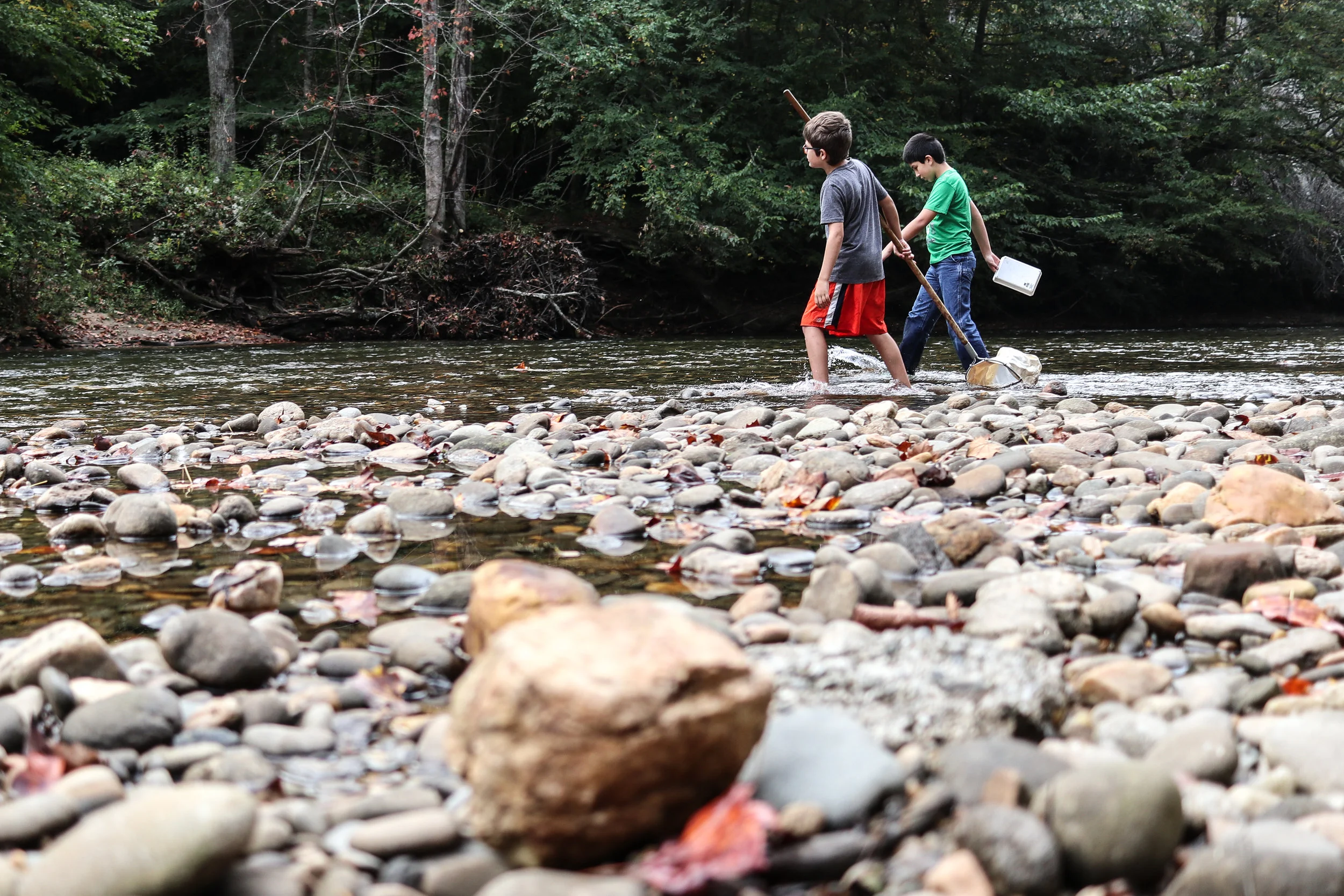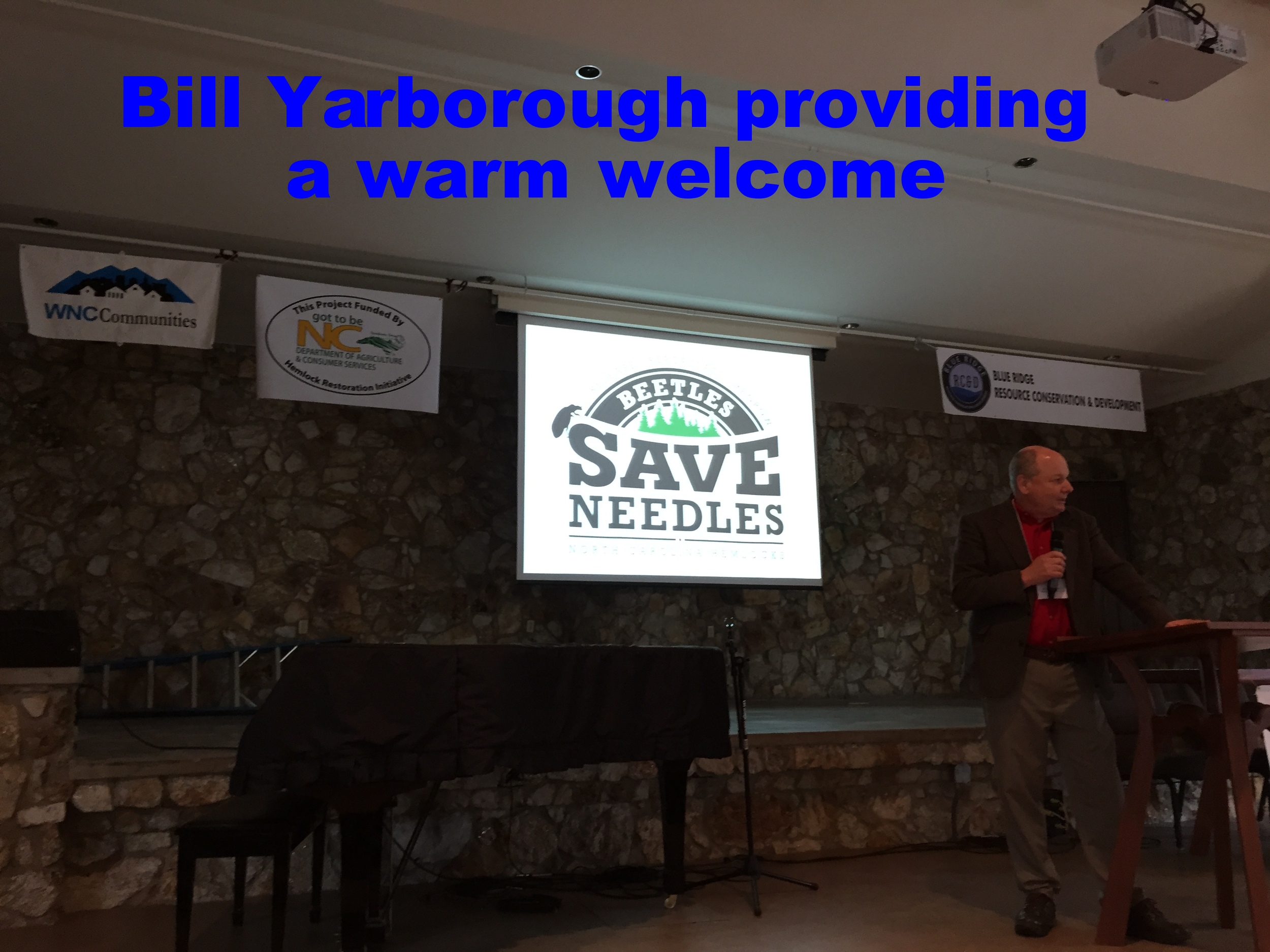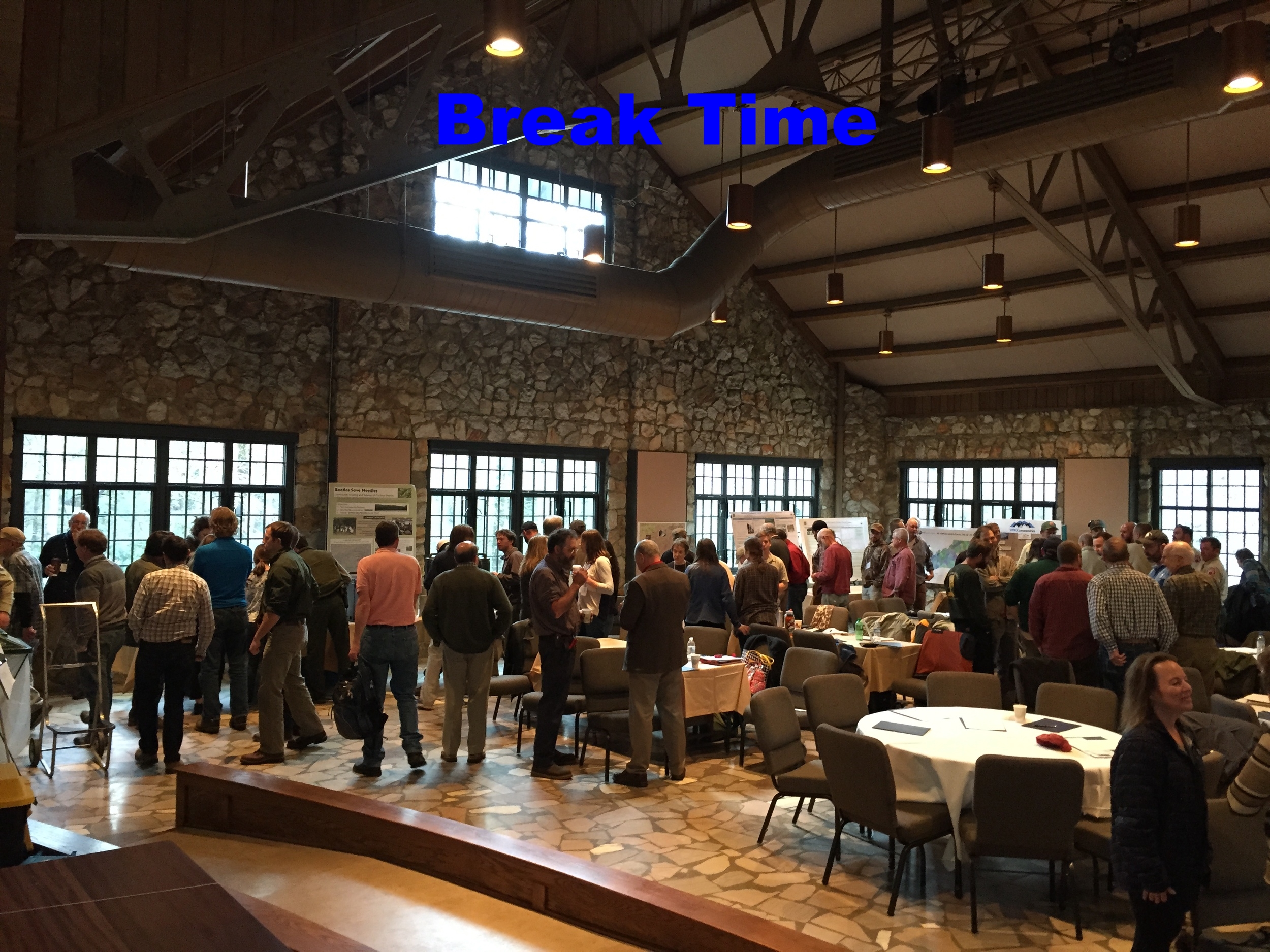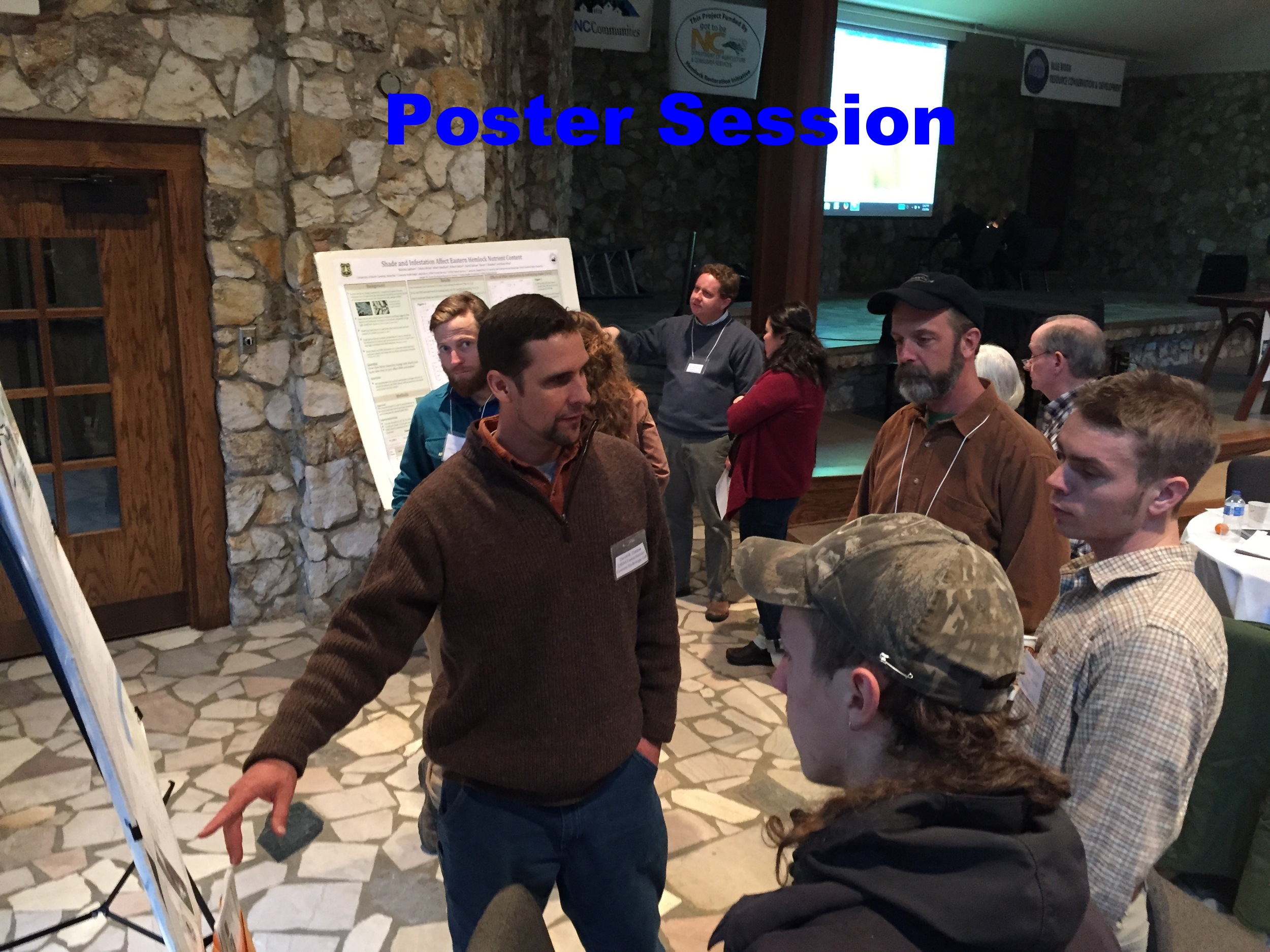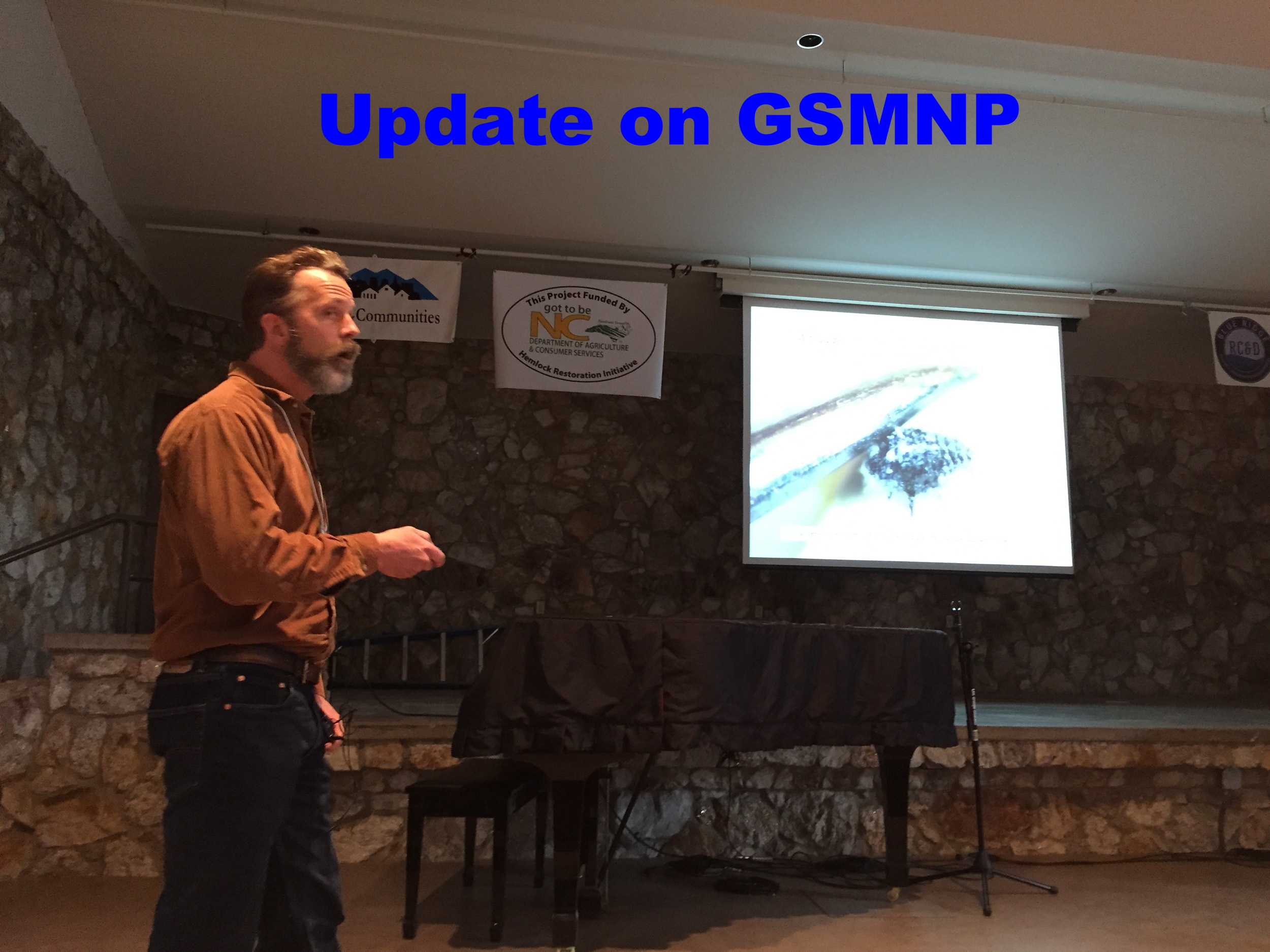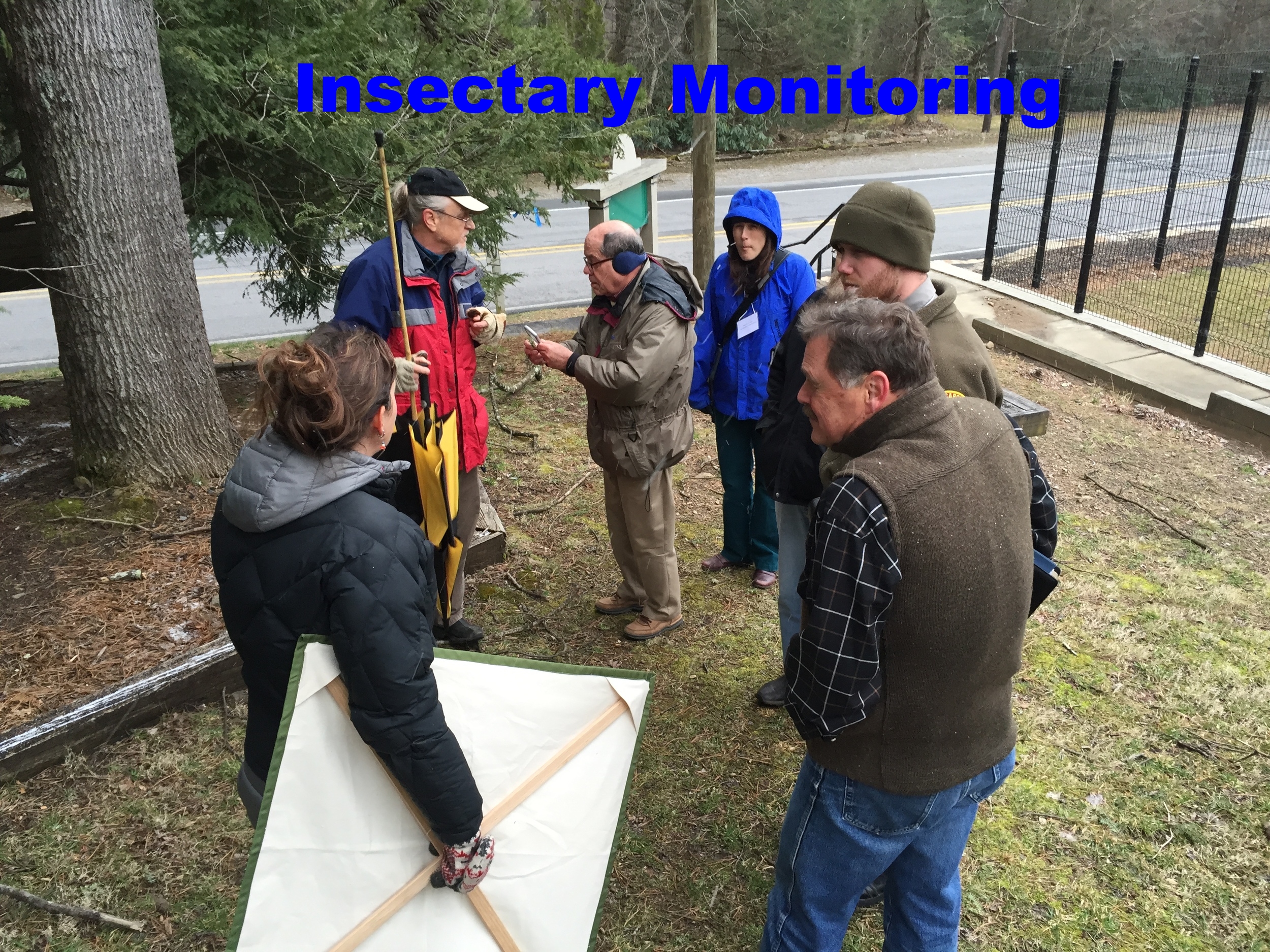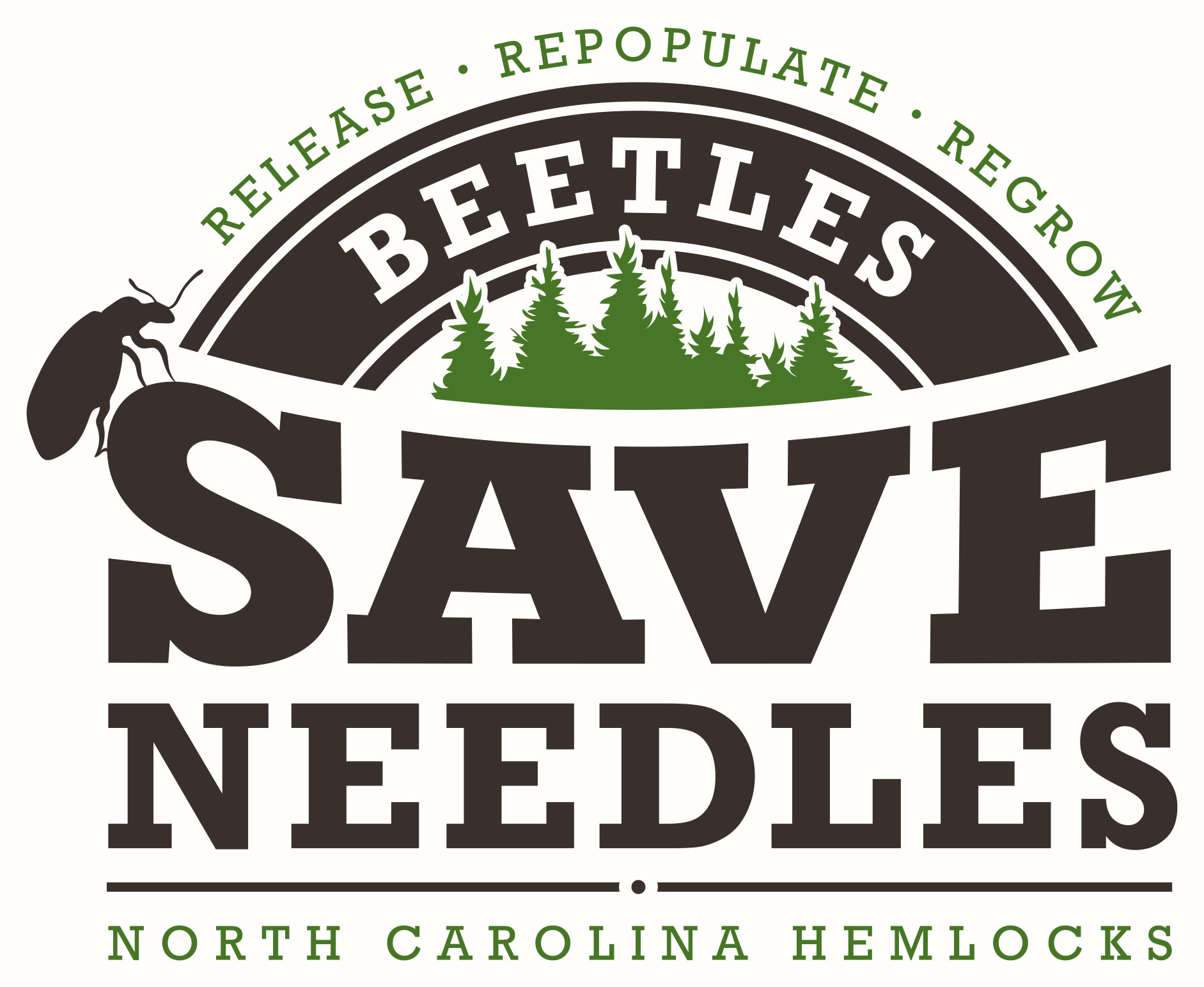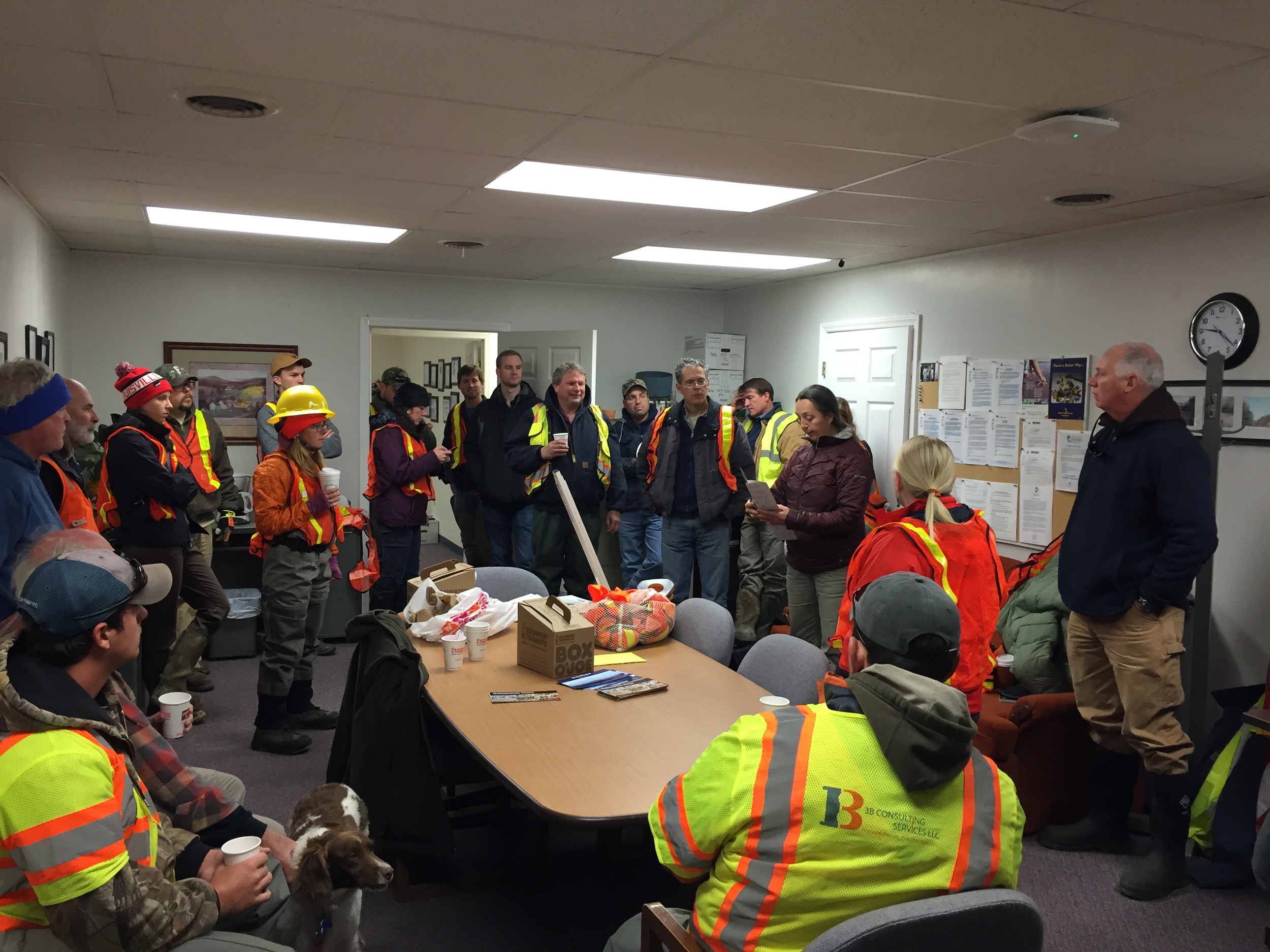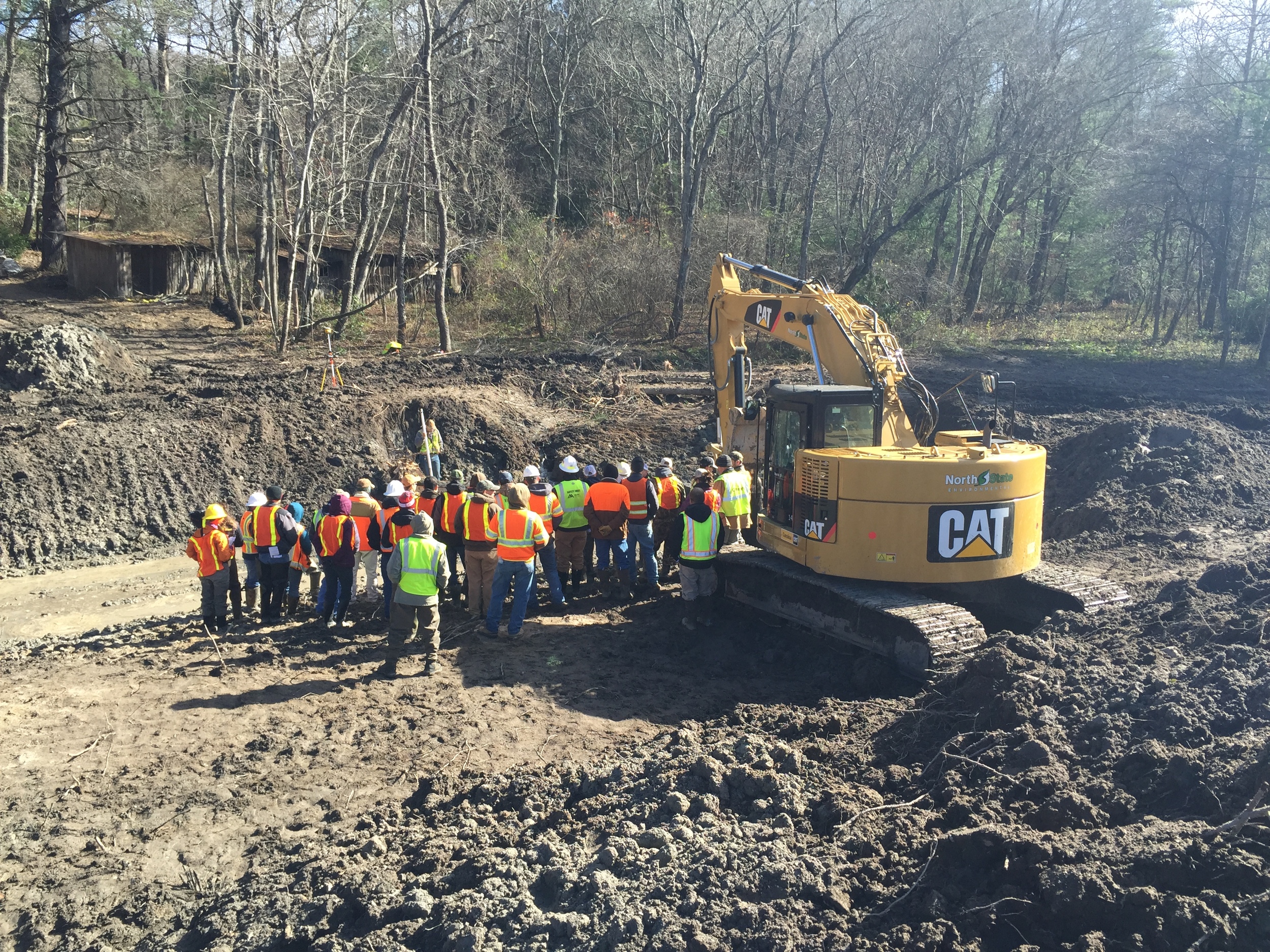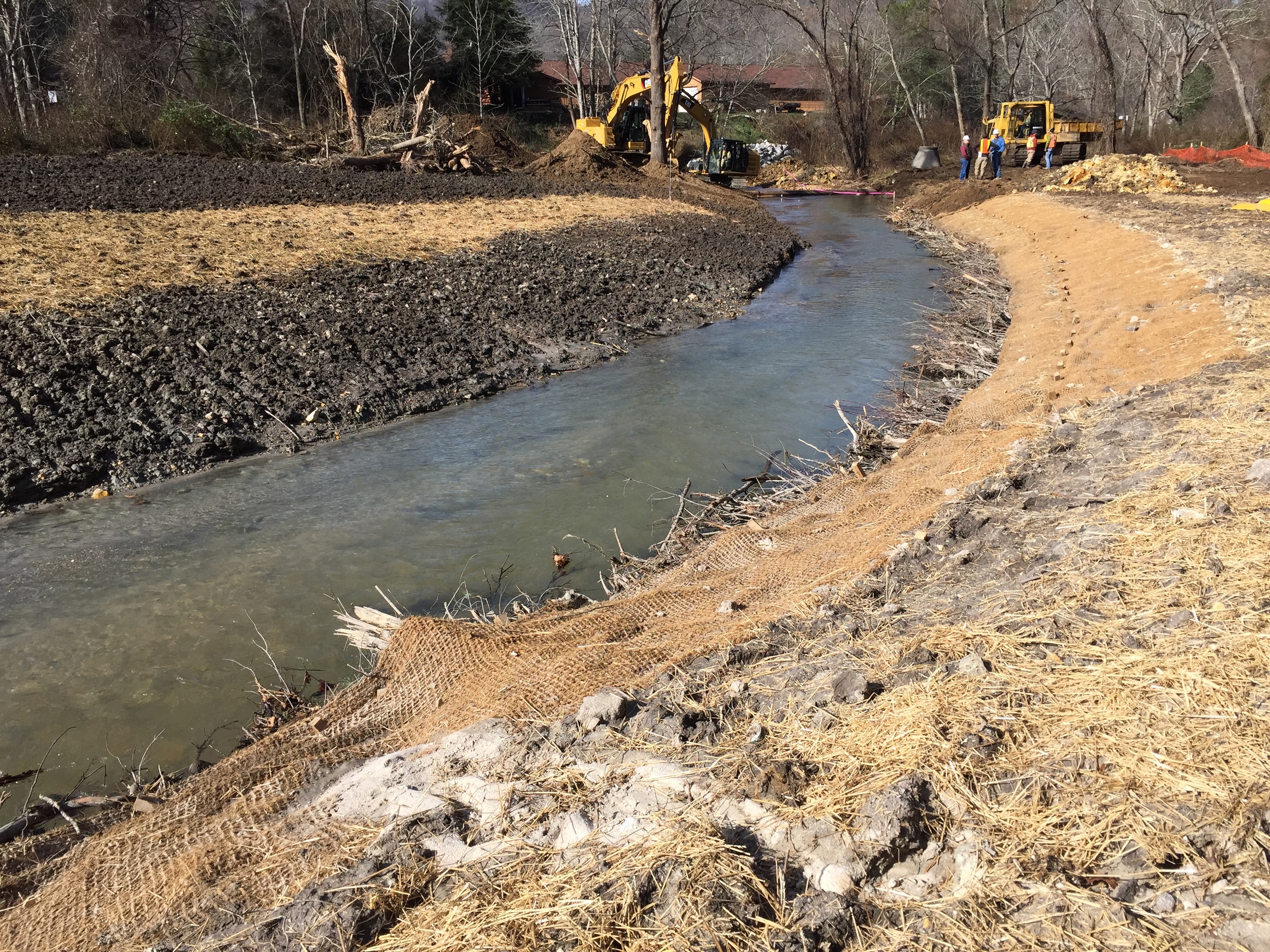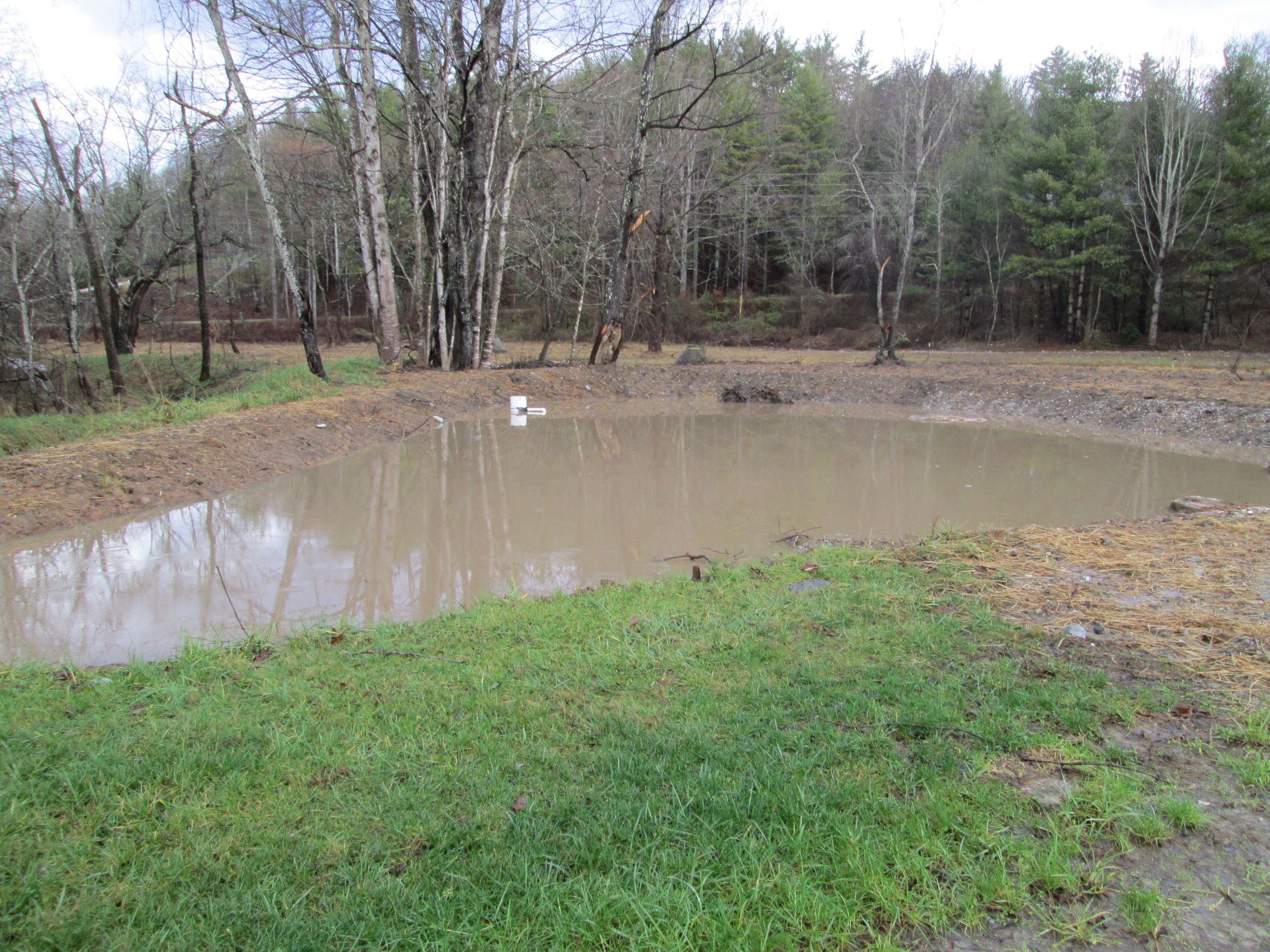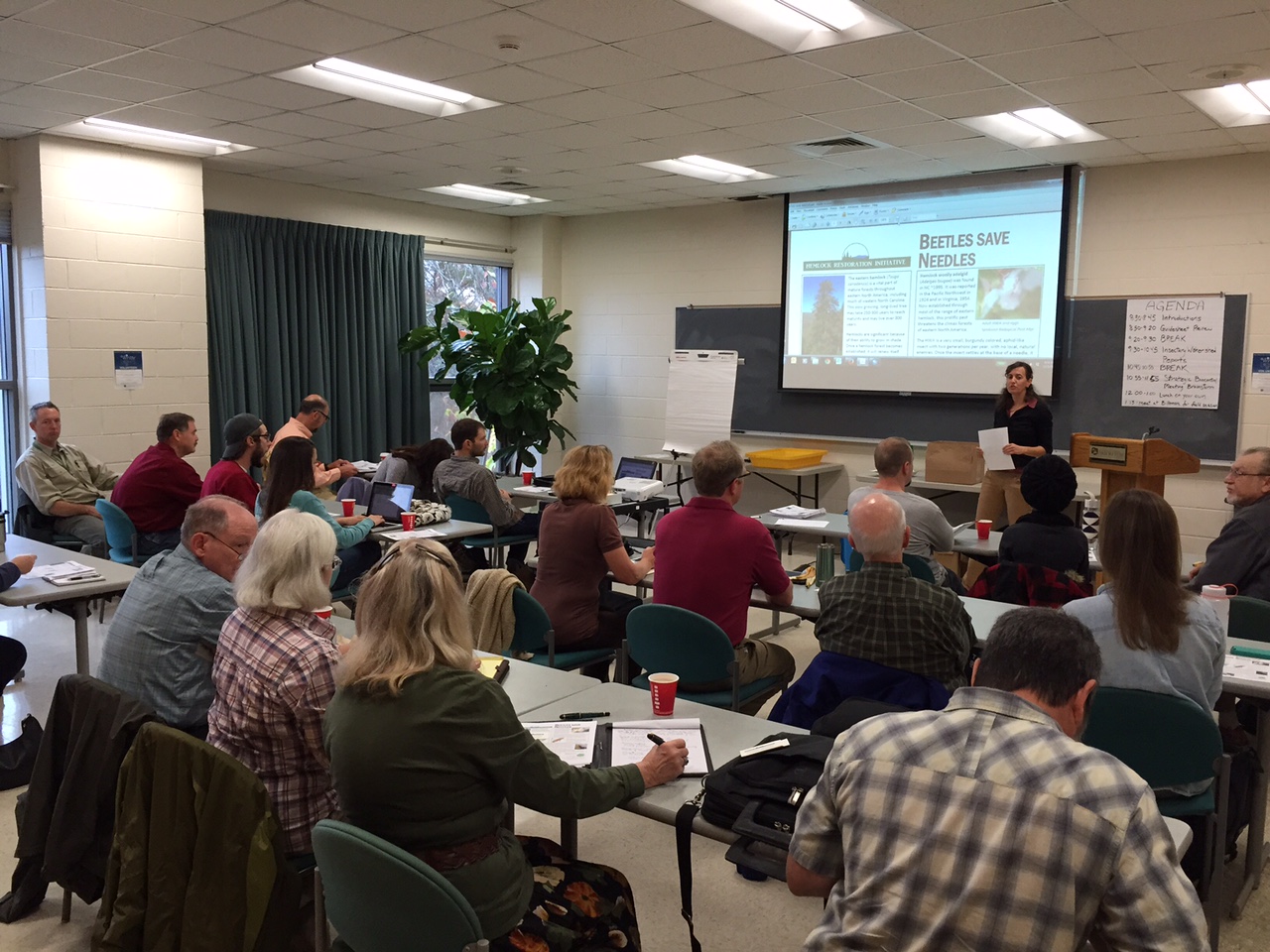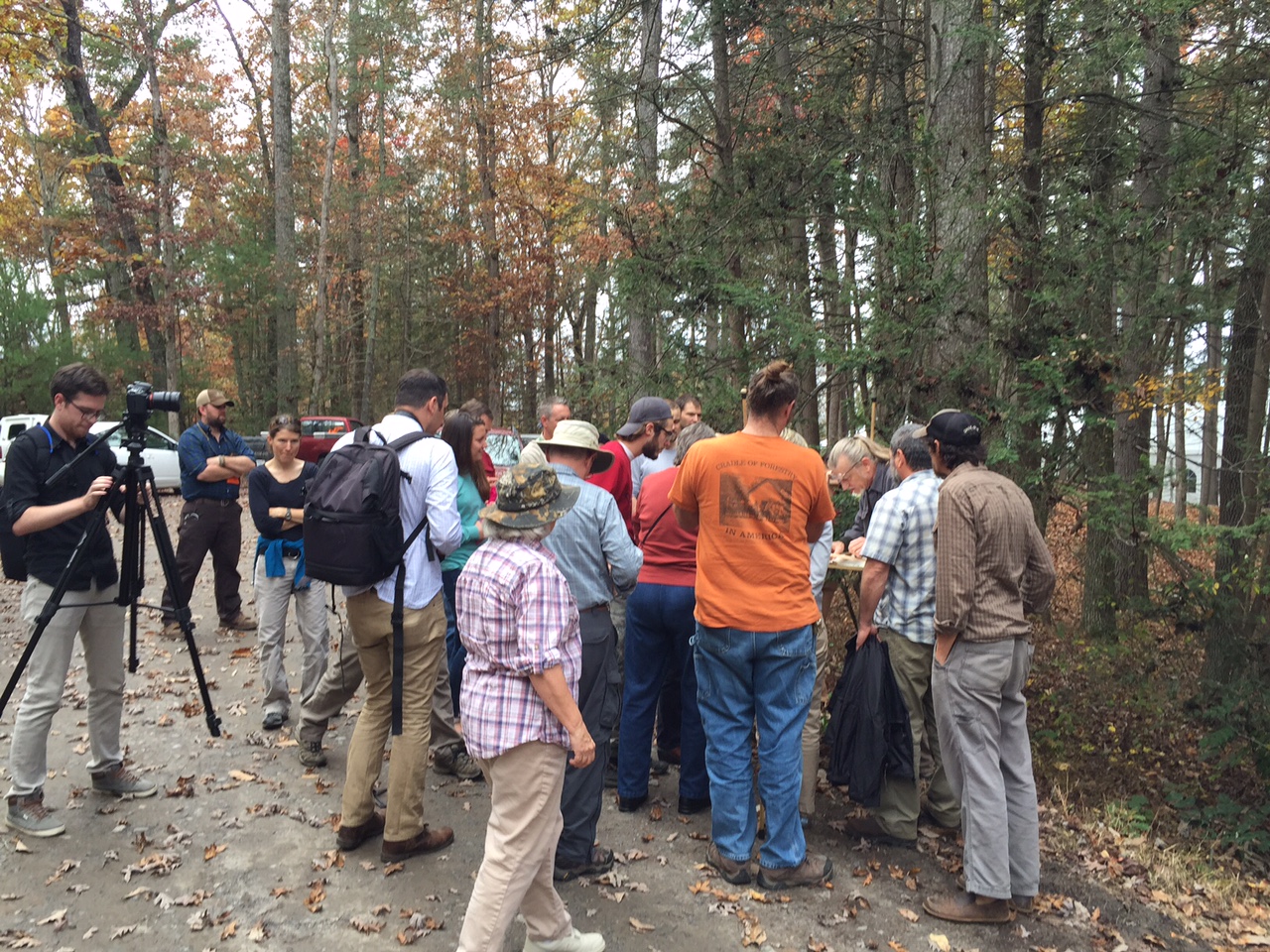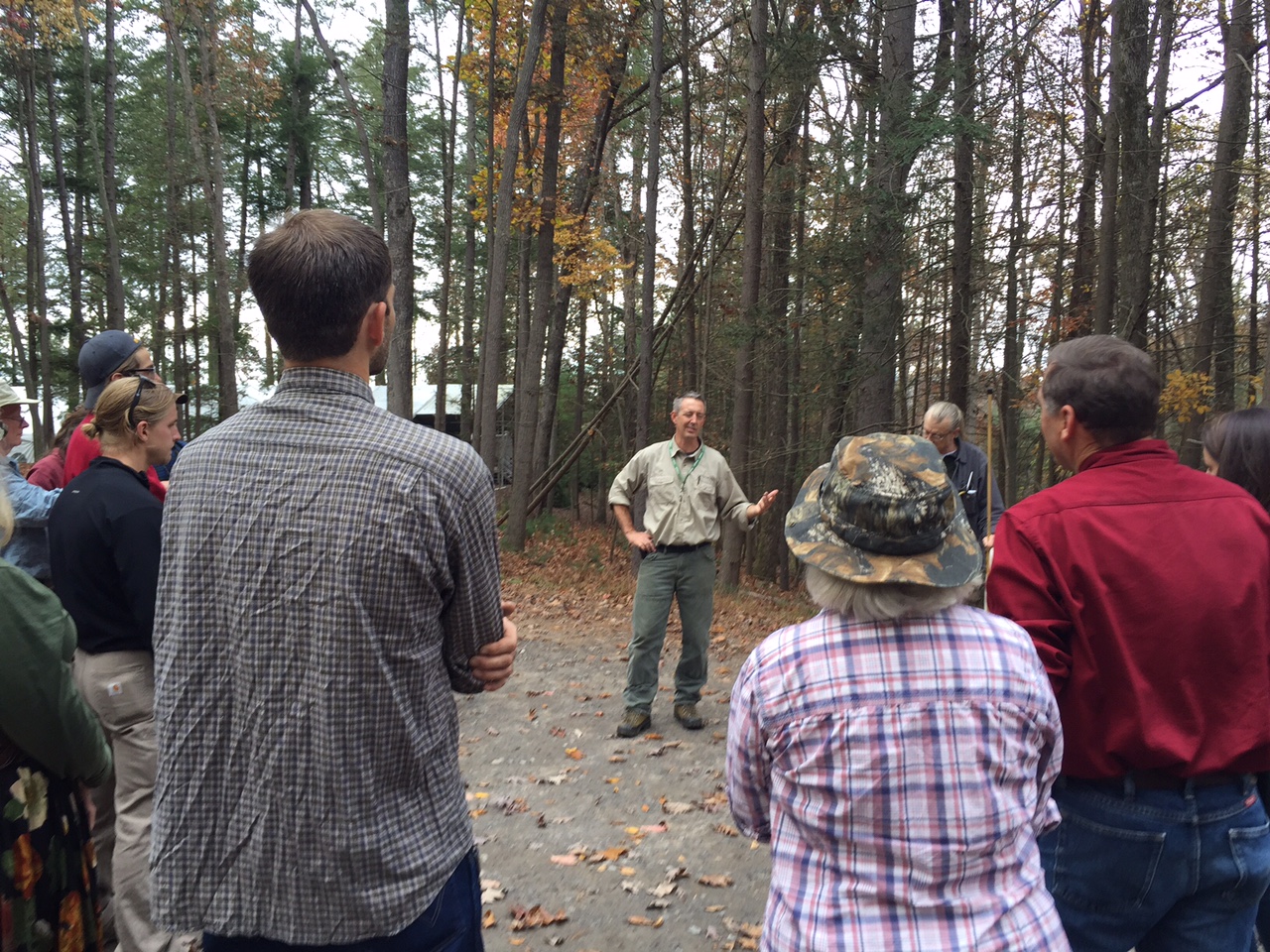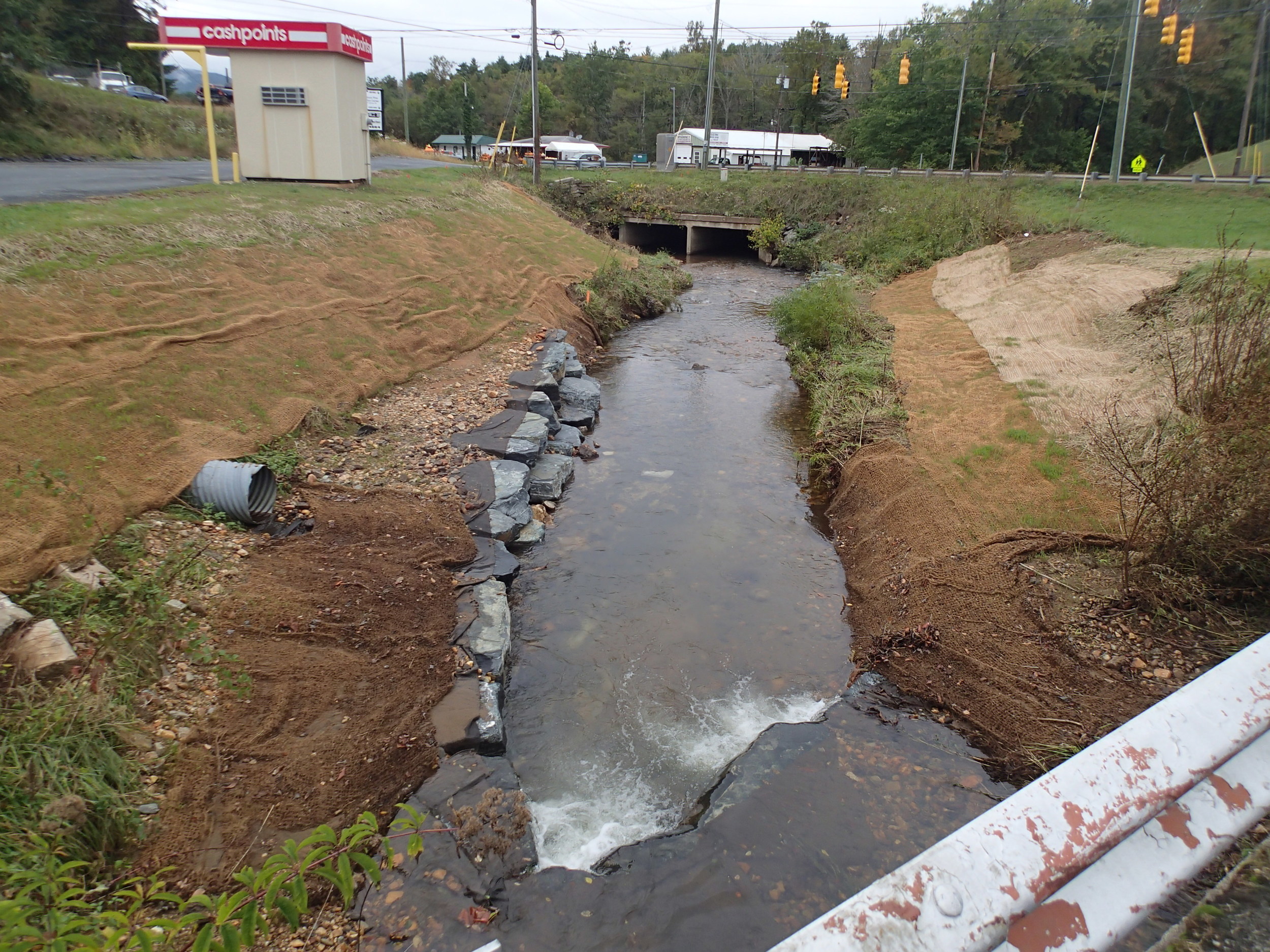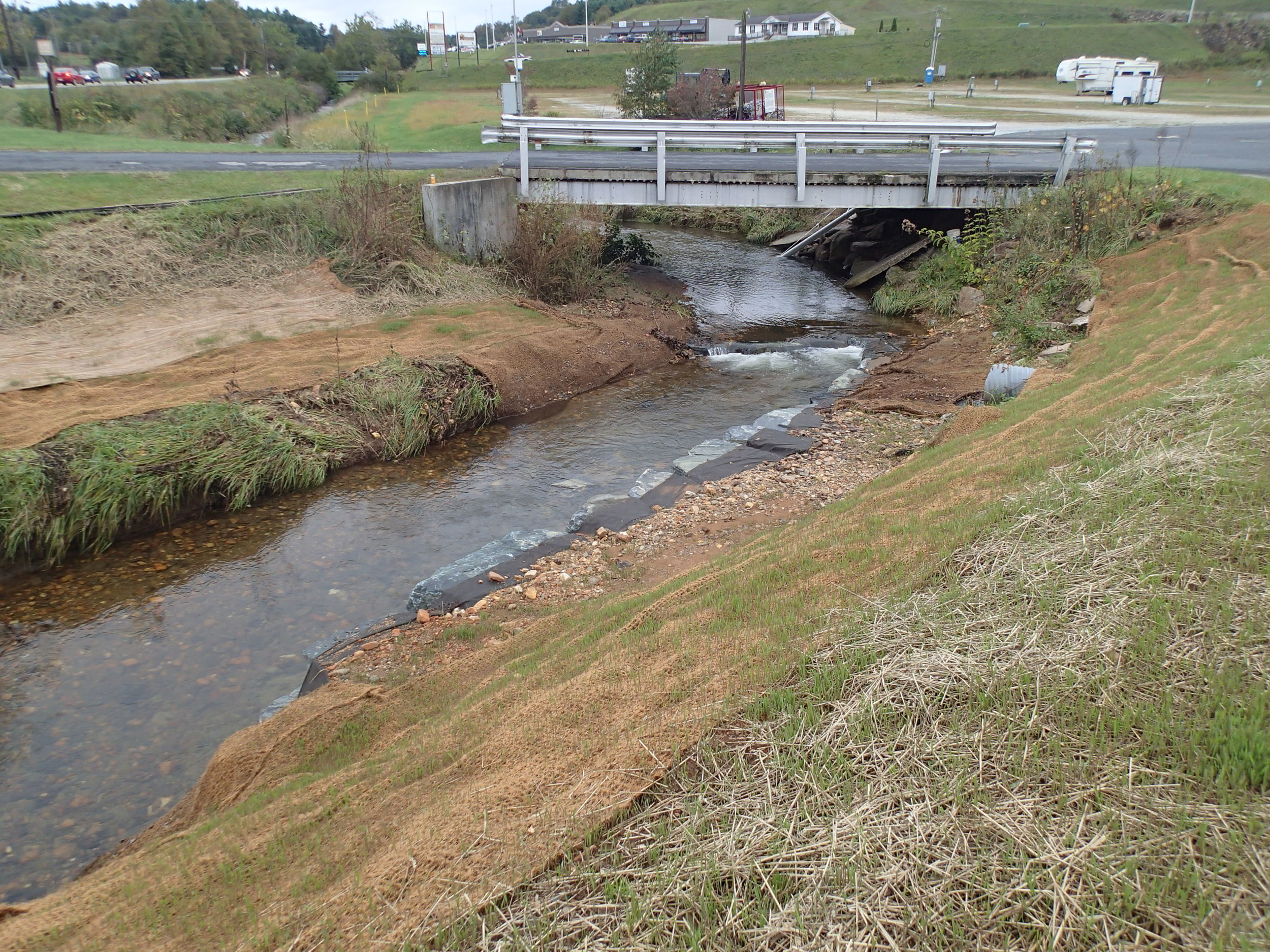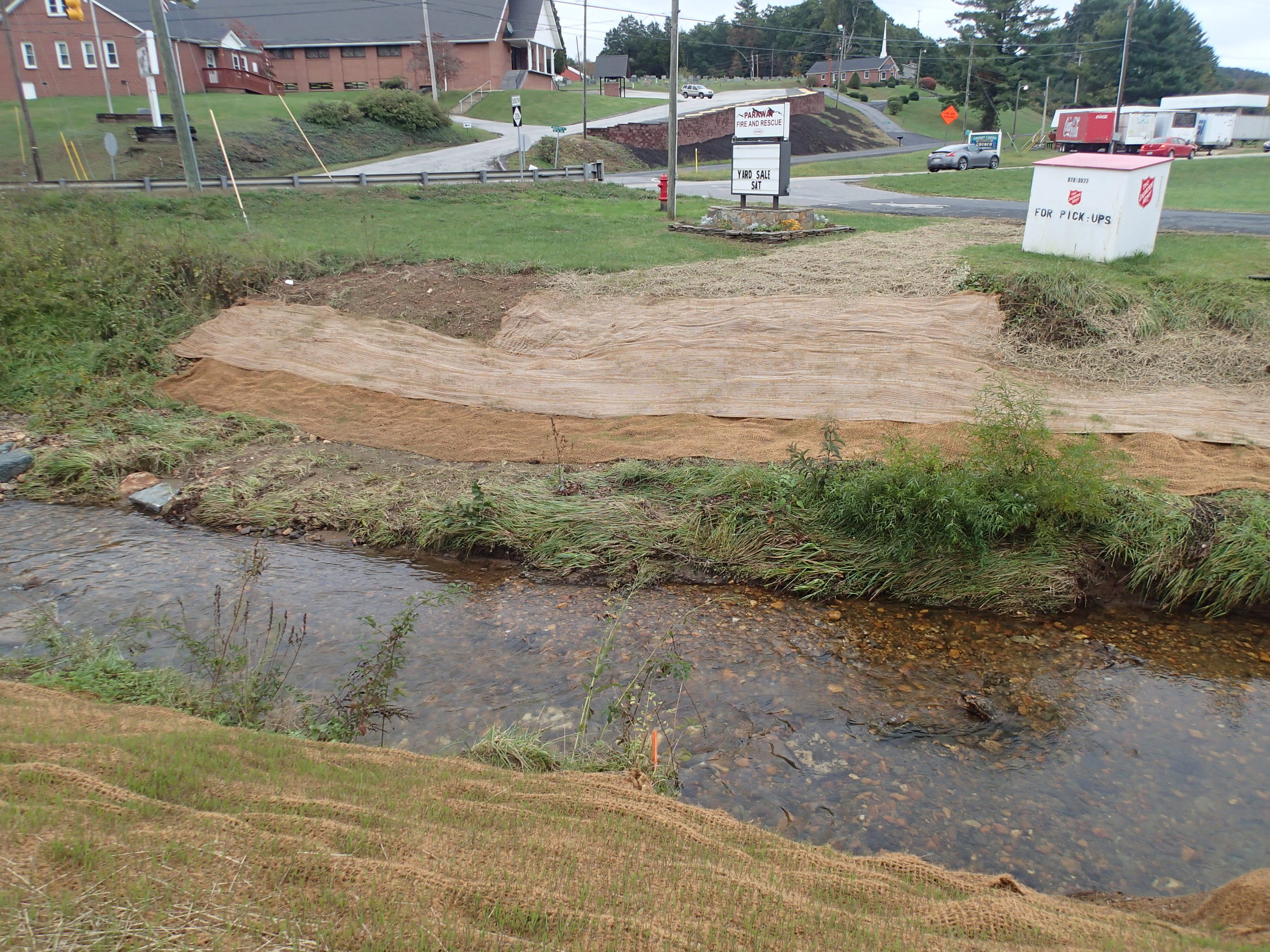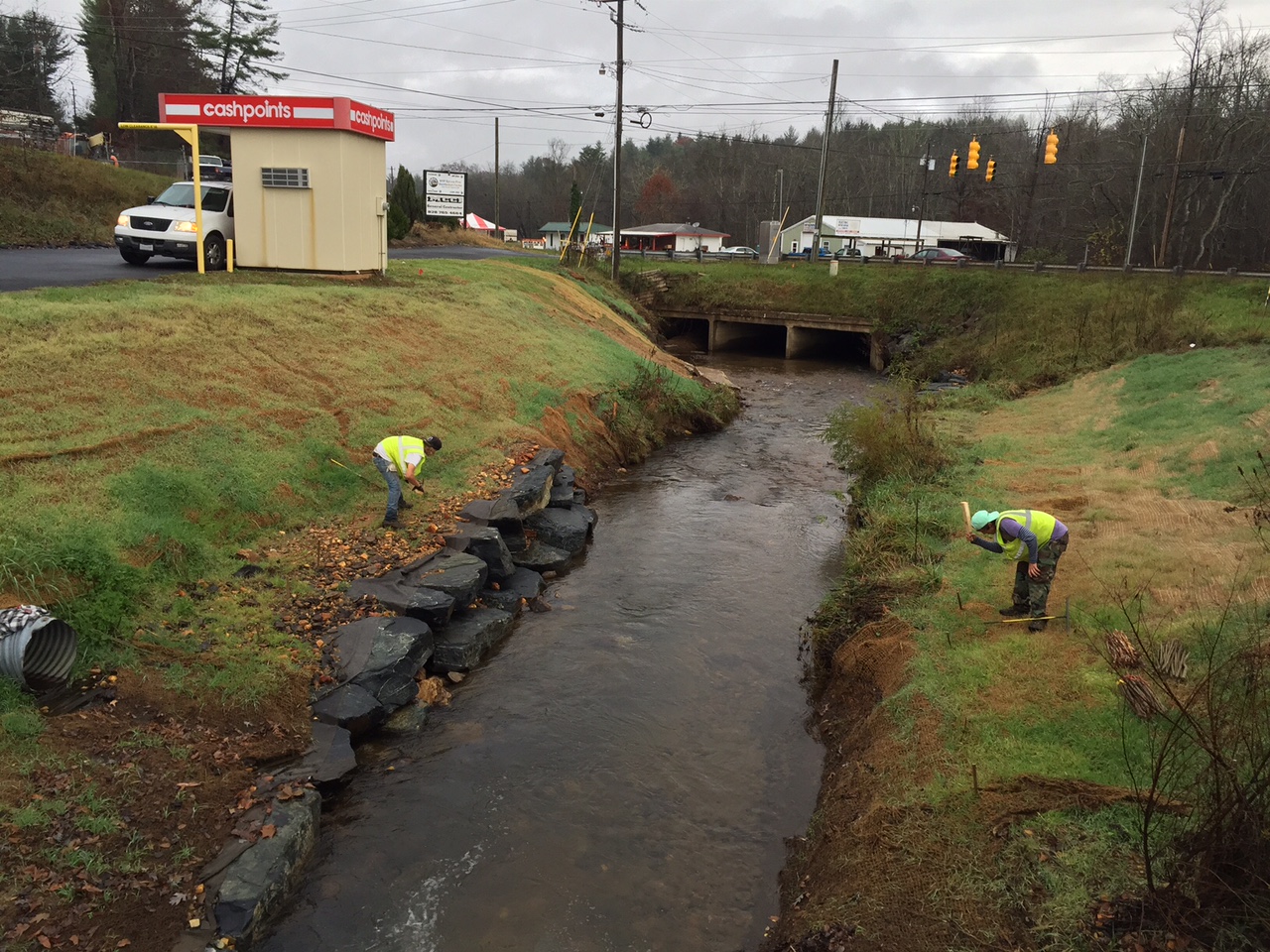The 2016 NC HWA Bio-Control Forum was a great success!! Over 130 hemlock conservationist attended the forum and represented a broad spectrum of interested stakeholders. Land trusts, RC&D's, Communities, State Agencies (Cooperative Extension, NCFS, NCWRC, NC State Parks), Federal Agencies (USFS, NPS GSMNP), Universities (UNCA, ASU, NCSU, Warren Wilson College, WCU), private consultants, arborists, foresters, hemlock conservation groups, and the Hemlock Restoration Initiative attended. The strong turn-out speaks volumes about how important saving and restoring hemlocks are to each and every one of us. Thanks to all those who attended and helped plan the meeting. The entire forum was filmed and we hope to have excerpts available in the near future. In the meantime, please enjoy some pictures from the forum.
Grassy Creek Restoration
The Grassy Creek Restoration project is a cooperative effort that includes partners such as: Toe River Watershed Partnership, Blue Ridge RC&D, Mitchell SWCD, NC Wildlife Resources Commission, US Fish & Wildlife Service, NC Division of Water Resources, National Park Service, NC State University, and local landowners.
This multi-beneficial project will improve Grassy Creek, capture and treat stormwater from impervious surfaces, and will create a section of the Mitchell County Overmountain Victory Trail! Over 2000' of Grassy Creek will be improved and will include habitat enhancements, historical channel realignment, bank stabilization with native plants, invasive species removal, and floodplain expansion. All these improvements will benefit the creek, adjacent lands, and the public. In addition, three constructed stormwater wetlands will capture and treat stormwater from the neighboring Grassy Creek Commons shopping center. Last but not least, a public trail is being developed that will be certified as a section of the nationally recognized Overmountain Victory Trail (http://www.nps.gov/ovvi/index.htm)
Beetles Save Needles Workshop
The November 2015 Beetles Save Needles workshop was a great success thanks to our growing partnership of community members interested in bio-control as a method to combat HWA. The classroom session was held at the NC Arboretum and reviewed the details of the Beetles Save Needles program. Topics covered included: how to collect, and release beetles, how to monitor beetle success, how to identify different life stages of beetles and HWA, and how to collaborate regionally to implement the program successfully and efficiently. Later that day we visited the Biltmore Estate, a developing insectary, where Dr. McDonald (Dr. Bug) demonstrated field monitoring techniques and discussed the life history status of HWA at this particular site. Bill Hascher then talked about how the Biltmore Estate is introducing Laricobius nigrinus beetle to certain areas of the property. Thanks to all who attended and look forward to building further momentum with the program!
Beetles Save Needles- Where It All Began
Blue Ridge RC&D attended a lecture by Dr. Richard McDonald at the University of Washington Arboretum. Dr. McDonald shared the history of the Hemlock Wooly Adelgid and how native beetles from the Pacific Northwest are being used to save eastern hemlock trees. We also collected beetles for shipment to western NC.
Parkway Fire and Rescue Department Stabilization Project- Ongoing Project
This project stabilized an eroding section along Grassy Creek, Mitchell County, NC. An instream j-hook structure was installed to slow and redirect water away from the streambanks. The j-hook also created a downstream pool habitat for aquatic life. Streambanks were shaped back to a more natural slope, covered with a natural matting fabric, and seeded with a native riparian seed mix. Livestakes will be installed along both banks once the dormant season has started and will provide root stabilization, habitat, and shade for Grassy Creek.

